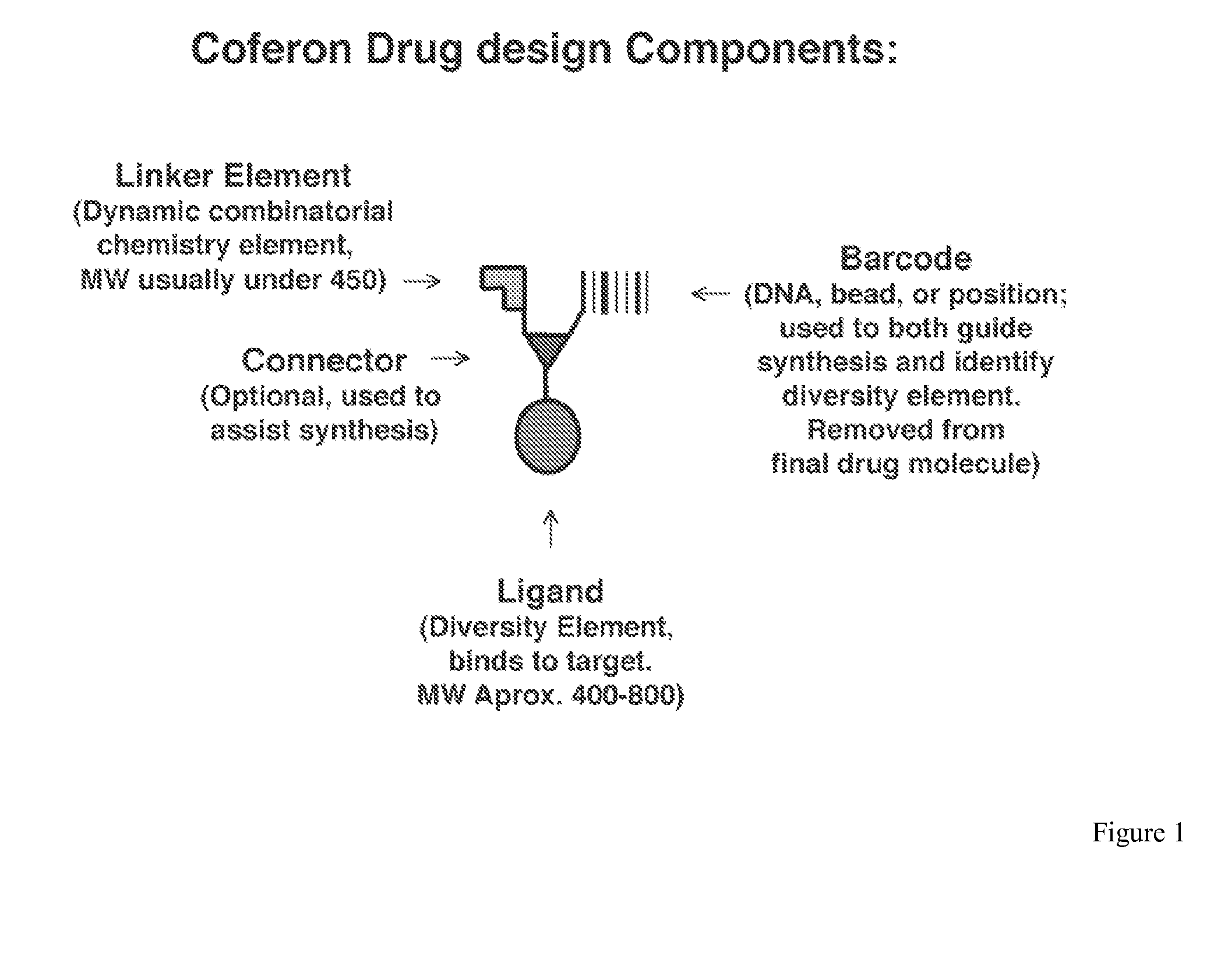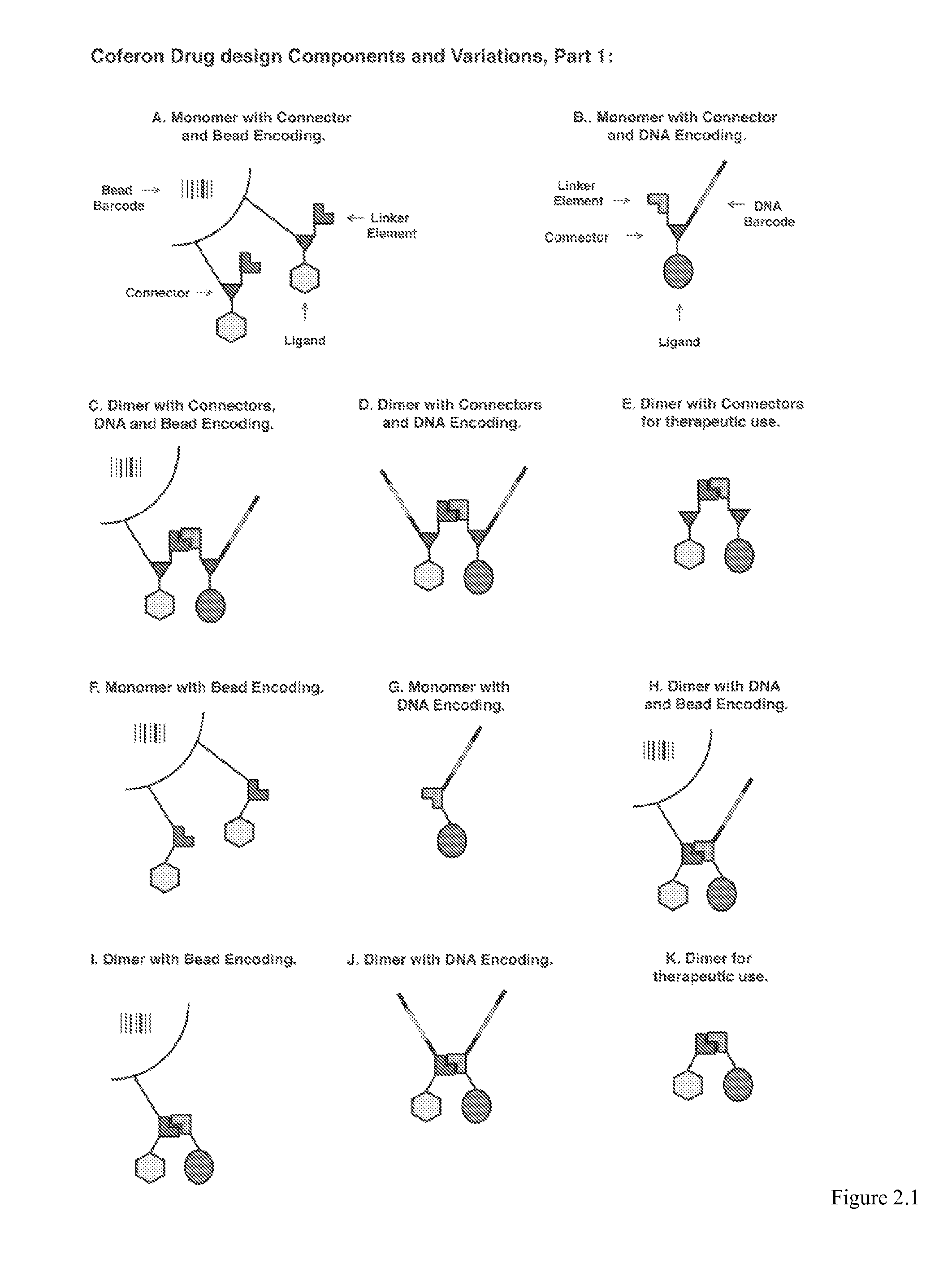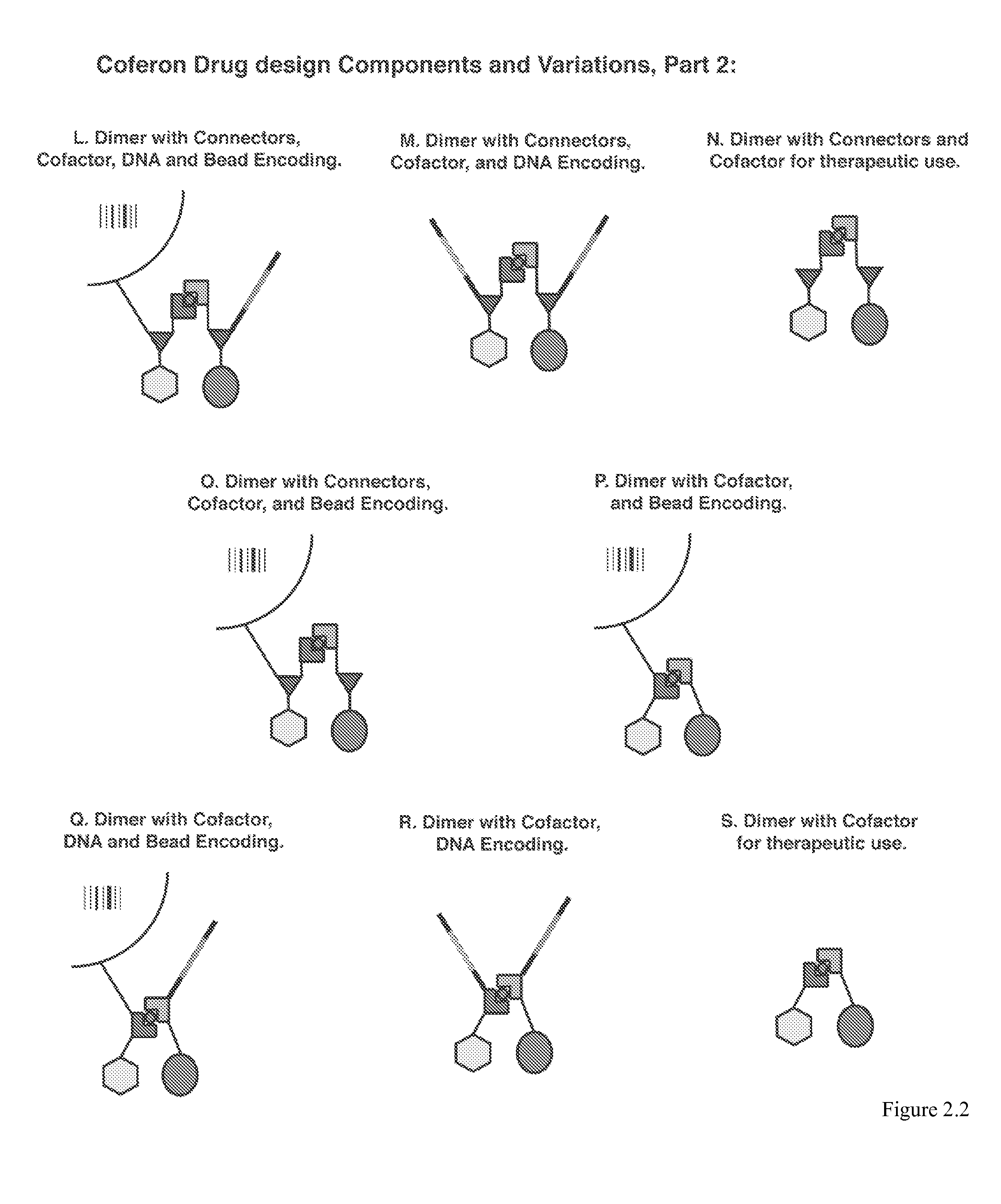Coferons and methods of making and using them
a technology of coferons and coferons, applied in the field of coferons and methods of making and using them, can solve the problems of limited interfering antibody therapies, inability to use their extraordinary specificity to inhibit intracellular protein signaling, and current drug design and drug therapy approaches do not address the urgent need
- Summary
- Abstract
- Description
- Claims
- Application Information
AI Technical Summary
Benefits of technology
Problems solved by technology
Method used
Image
Examples
example 2
[0416]
27C)
[0417]
[0418]Derivatives Based on Linker Elements that are Actively Transported into Target Cells
[0419]Linker elements that contain folic acid will preferentially enter cancer cells using the folate transporter (Linker Elements 28). In one embodiment, diversity element is attached to the folic acid based linker element via an ethylene glycol linker.
28A)
[0420]
[0421]In another embodiment, the two folate moieties have the opportunity to become reversibly covalently linked to each other.
28B)
[0422]
[0423]Reversibly-Linked Folic Acid Linker Element Dimer
[0424]In a third embodiment, the folic acid moiety is attached to a second linker element via a disulfide bond. Cleavage of the disulfide bond by glutathione within tumor cells now facilitates irreversible binding of two linker elements through formation of a thiazolidine ring.
28C)
[0425]
[0426]In other variations, the linker element may be attached to other moieties to make linker element precursors that bind receptors or transporte...
##ic example 1
Prophetic Example 1
Synthesis of a Library of Linker Element Monomers
[0907]In this portion of the prophetic example, as described in FIG. 30, the synthesis of linker elements of the type Linker Element 9, is shown by the generic Formula XIII, an aromatic compound that intercalates with one or more of its binding partners, is described. For the processes below, beads are used where each bead has a unique identifier. This identifier may be a Veracode™ barcode, a sequence of DNA, a set of molecules that may be distinguished spectrally, or a set of molecules that may be distinguished by their mass. In general, the number of beads exceeds the number of different final product structures, such that more than one barcode can encode for the same final product on independent beads, but no two beads have the same barcode and different product molecules (other than stereoisomers). Ten different sets of Veracode™ beads (each bead bearing a different barcode) are individually reacted with 10 diff...
##ic example 2
Prophetic Example 2
Screening of Linker Element Monomers to Find Pairs of Linker Elements that Bind Each Other to with the Greatest Affinity
[0910]The bead set of linker element monomers is allowed to interact with the solution set of linker element monomers in an aqueous buffer that mimics physiological conditions (pH 7.4, 37° C.). The linker elements in solution intercalate with the linker elements on beads in a reversible manner. For the tightest binding pair of linker element monomers, this equilibrium is shifted towards the formation of linker element dimers (FIG. 33). In this portion of the prophetic example, the greatest affinity is seen between the monomer containing the aromatic groups Ar1 and Are and the monomer containing the aromatic groups Ar3 and Ar4. The linker element monomer 1,2,3-triazole flanked by the aromatic groups Ar1 and Ar2, is bound to a Veracode™ bead and can be identified based on the barcode on the Veracode™ bead. The linker element monomer 1,2,3-triazole ...
PUM
 Login to View More
Login to View More Abstract
Description
Claims
Application Information
 Login to View More
Login to View More - R&D
- Intellectual Property
- Life Sciences
- Materials
- Tech Scout
- Unparalleled Data Quality
- Higher Quality Content
- 60% Fewer Hallucinations
Browse by: Latest US Patents, China's latest patents, Technical Efficacy Thesaurus, Application Domain, Technology Topic, Popular Technical Reports.
© 2025 PatSnap. All rights reserved.Legal|Privacy policy|Modern Slavery Act Transparency Statement|Sitemap|About US| Contact US: help@patsnap.com



